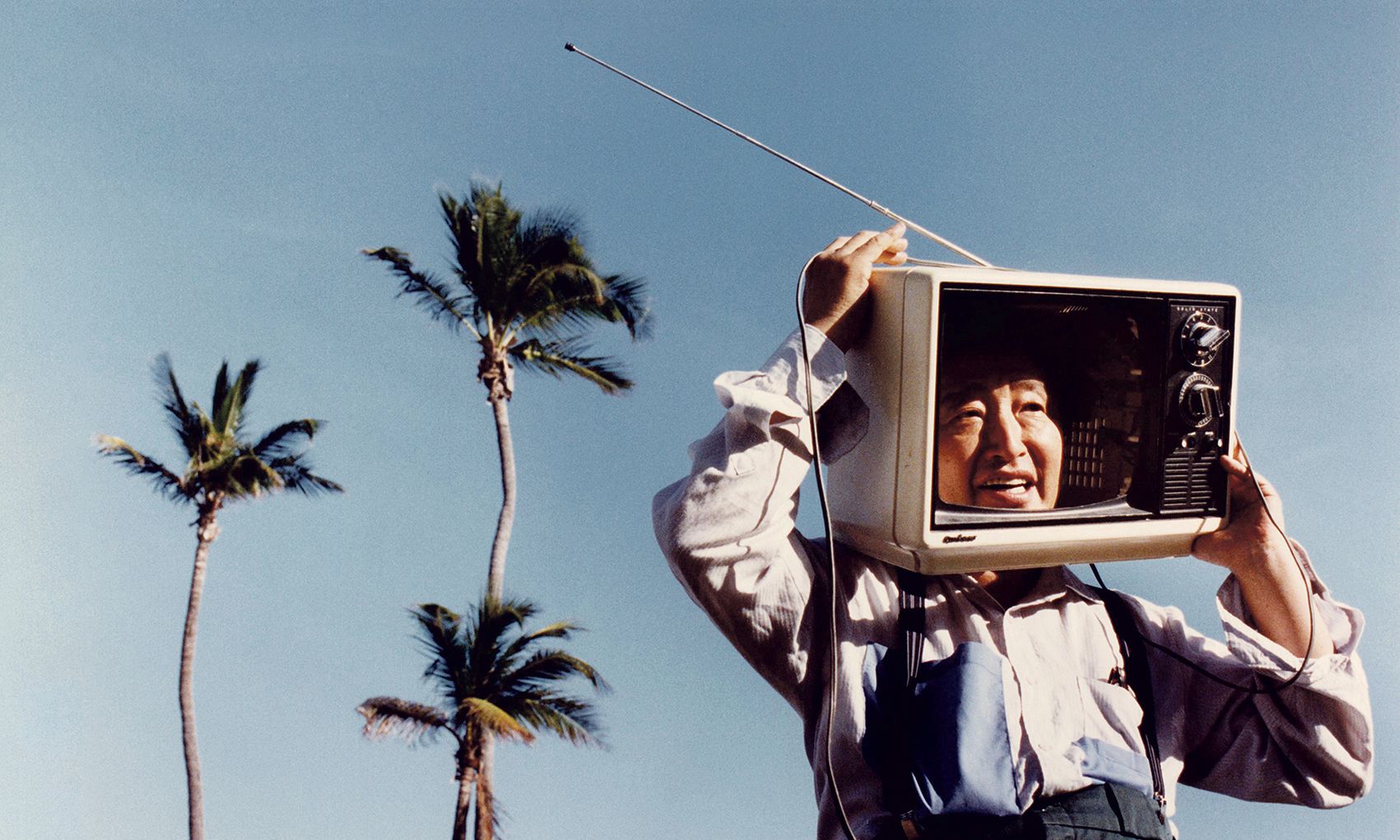While living in south Florida, Nam June Paik created two commissions for Miami International Airport Photo: Brian Smith; Courtesy of the artist
The Korean American Fluxus artist Nam June Paik—often referred to as the “father of video art”—may have made his name in New York in the 1960s and 70s, but he spent the last years of his life in Miami Beach, where he was an active part of the local art scene, continuing to create work until his death in 2006. This exhibition at The Bass celebrates the artist’s work in South Florida, with a focus on his “action music”, humanised robots and a pair of often forgotten public art commissions for Miami International Airport.
The Miami Years came about as a means of premiering the museum’s recent acquisition of Paik’s TV Cello (2003), which he made while living in Miami Beach. Unfortunately, as the curator James Voorhies discovered, information about Paik’s life and work in South Florida was difficult to come by. “There is hardly any reference to Miami in existing scholarship, particularly his airport projects,” he tells The Art Newspaper, so Voorhies set out to fill that biographical gap, scouring local archives at the Miami-Dade Public Library and searching old Miami Herald articles for the artist’s name. Some of his archival findings are on display as part of the exhibition.
The first of the show’s “anchors”, as Voorhies puts it, is Paik’s action music projects, with TV Cello as a central object. It is one of around ten interpretations of the musical instrument that Paik made using three stacked, broadcasting TVs. Paik, a classically trained pianist, created his first TV Cello in 1971; it had strings so that his collaborator, the cellist Charlotte Moorman, could play it. Later versions morphed into sculptures that could perform on their own, as it were, including the one at The Bass. With each new iteration over the 30 years he made TV Cello, Paik used the latest technologies. The Bass’s version uses LCD monitors, which were fairly new when it was made. “Paik always worked in the moment,” Voorhies says.
In the next section, Paik’s robot sculptures encapsulate the artist’s technological optimism. Paik made a point of humanising his robot sculptures—created using TVs and radios playing works by the artist—and they are all friendly and non-threatening. Paik’s first robot was remote controlled, Voorhies says: “He took it to the streets of New York, and it would talk to people and interact with them.” One robot on display at The Bass is a portrait bust of sorts of Lucy—our ancestor from more than 3 million years ago—bridging the very concept of humanity with technology. Another celebrates the birth of the internet. “Paik believed that technology could build community and connect people globally,” says Voorhies. (The artist also liked to make robot portraits of his friends, including John Cage and Joseph Beuys.)
The final section covers Paik’s airport commissions, which were installed in 1990. One of these, WING, included almost 100 TVs lined up in rows with a propeller in the middle. The other, MIAMI, spelled out the name of the city using 74 monitors. In both works, the TVs played thousands of clips of the beach, palm trees, flamingos, boats, traffic, lava and some of Paik’s “electronic paintings”. “By 1998, both works had been removed from view,” says Voorhies, due to airport construction and water damage. However, he adds, discussions are under way to reinstall them at the airport.
It was during the process of making the airport projects that Paik bought a condo in Miami Beach, at 1390 Ocean Drive, just a mile south of The Bass. Voorhies says that his name still appears on the intercom, and that there’s a Paik poster in the lobby.
Nam June Paik: The Miami Years, The Bass, until 16 August 2024

